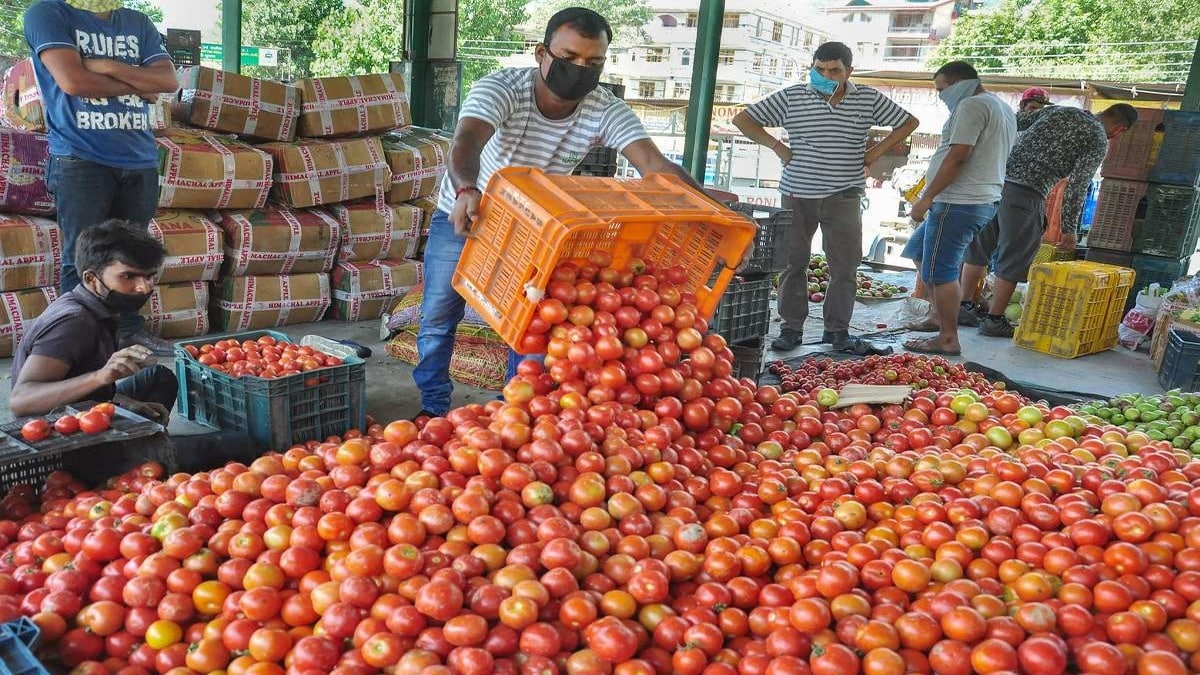Many individuals have even stopped eating tomatoes as a result of the recent increase in tomato costs, which has raised household kitchen budgets across India. Tomatoes have increased in price by up to Rs 150 to Rs 200 per kilogram in retail marketplaces over the past few weeks, and experts don’t see any signs of a price drop. Various environmental, logistical, and market variables are thought to be responsible for tomatoes’ excessive price. The market’s accessibility to the crucial vegetable has been impacted by the nonstop rain and a lack of fresh produce.
Customers are anticipating a price decrease as tomato costs continue to rise. The cost of tomatoes is affected by a variety of factors, and there is no indication that it will decrease in the next days. According to Ajith, a wholesaler in Chennai, the average rate “will decrease after 20-25 days.” He stated that the introduction of Kharif tomatoes is anticipated to improve the production by that time. We can anticipate higher agricultural yields as a result of climate change. Agricultural expert Devinder Sharma predicts that prices would drop in August as yields rise. He did not, however, speculate on how much these prices may fall in the following day or how that will impact farmers.
Tomato supply shortage :
The extraordinarily low prices that farmers have been forced to accept for the past six months have left them in financial losses, according to the Maharashtra government, and are the root cause of the current problem. This led to a decrease in tomato farming and delays in plantings. The delayed monsoon presented a problem for the farmers during the sowing season. The production of tomatoes was further hampered by unseasonal rain, hailstorms, and a rainfall deficit of 54%.
Due to low production, the availability of tomatoes has dramatically decreased in Maharashtra, the state with the largest tomato market, creating a supply shortfall. On the plus side, it’s predicted that fresh tomato deliveries will resume in early August along with the harvest of the new crop.
The price of tomatoes exceeded Rs 160 per kg in Mumbai due to an unseasonably high rainfall and a fungus, and similar problems were also observed there. The price of tomatoes in Punjab rose dramatically in just three days as a result of the nonstop rain.
Market conditions now and predictions :
Due to the severe rains hurting trade and distribution, tomato prices in North India have risen to Rs 200 per kg. Not just tomatoes are in trouble right now. Price increases are also occurring for other produce, including onions, potatoes, beans, cauliflower, cabbage, and ginger.
In the meantime, the Consumer Affairs Department reports that the price of tomatoes grew by 38% in June compared to the previous month, while the price of potatoes and onions increased by 5.7% and 4.2%, respectively. Traders claim that the spike in tomato prices is unlikely to go down in the short term, nevertheless, because of crop damage. There are shortages of staple ingredients for Indian cuisine including tomatoes, chillies, and onions as a result of uneven monsoon rains that have harmed crops of some perishable items and impeded the flow of products.
Estimated tomato price in the future :
For the next two months, until crops from Rajasthan and Madhya Pradesh come, analysts forecast high prices.
Despite a decline in tomato exports from India, the UAE, Bangladesh, and Nepal continue to be the country where Indian tomatoes are most frequently shipped. Around 111 lakh tonnes of tomatoes are expected to be consumed domestically, while Andhra Pradesh and Karnataka are expected to produce 42 lakh tonnes of those tomatoes.
Effect on Inflation :
Costs are anticipated to increase in July as a result of rising prices for basic goods like tomatoes. India’s annual inflation rate dropped to 4.25 percent in May 2023, a 25-month low, mostly due to a reduction in food prices. However, predictions for June 2023 indicate a reversal in this trend, with CPI inflation expected to increase to 4.6%. This increase is mostly linked to rising food prices brought on by crop damage from unbalanced monsoon rains. These climatic changes resulted in a lack of basic cooking supplies like tomatoes, peppers, and onions, which drove up the cost of those ingredients.


